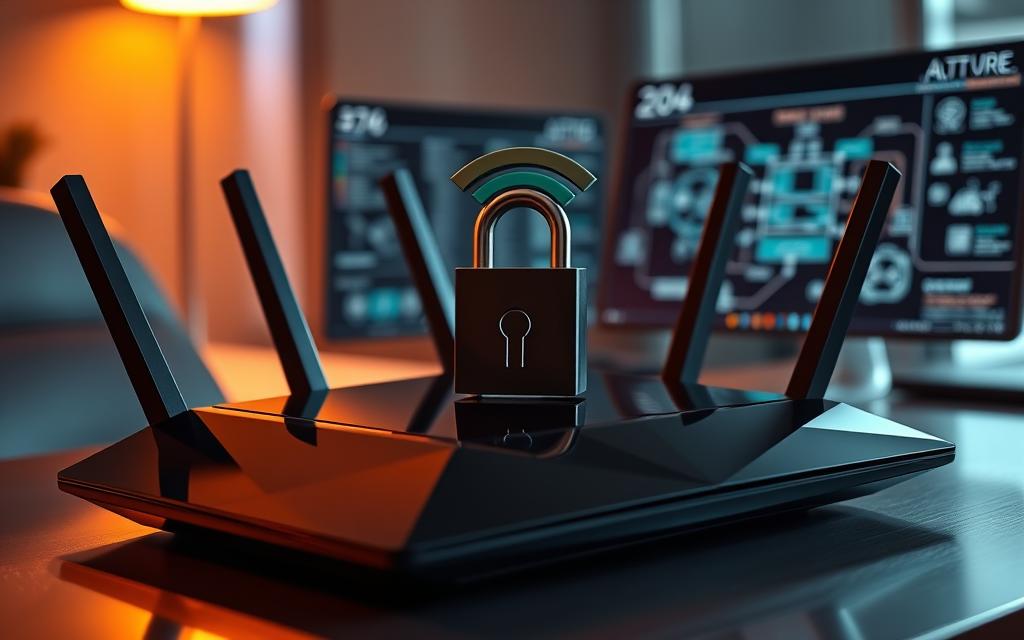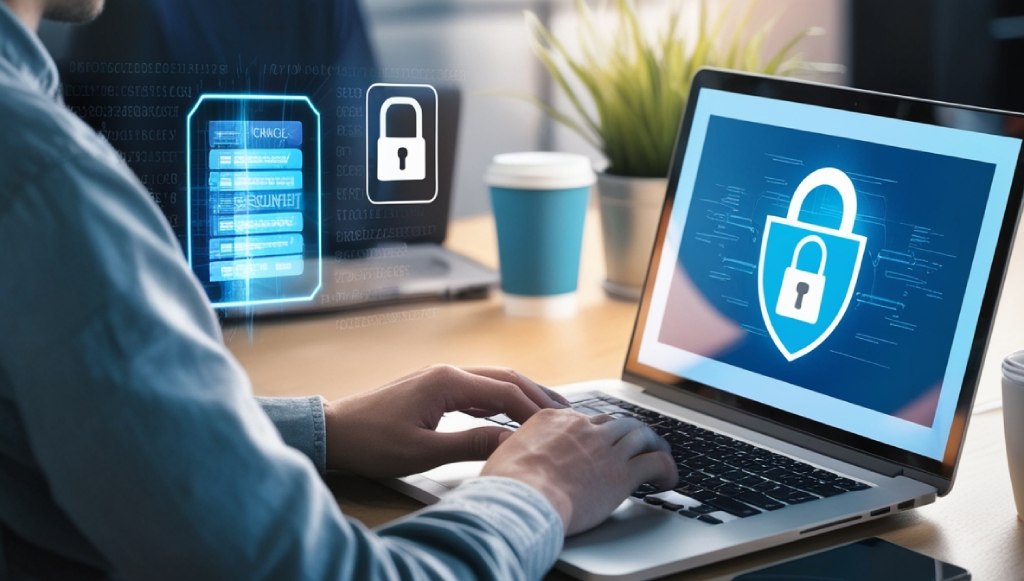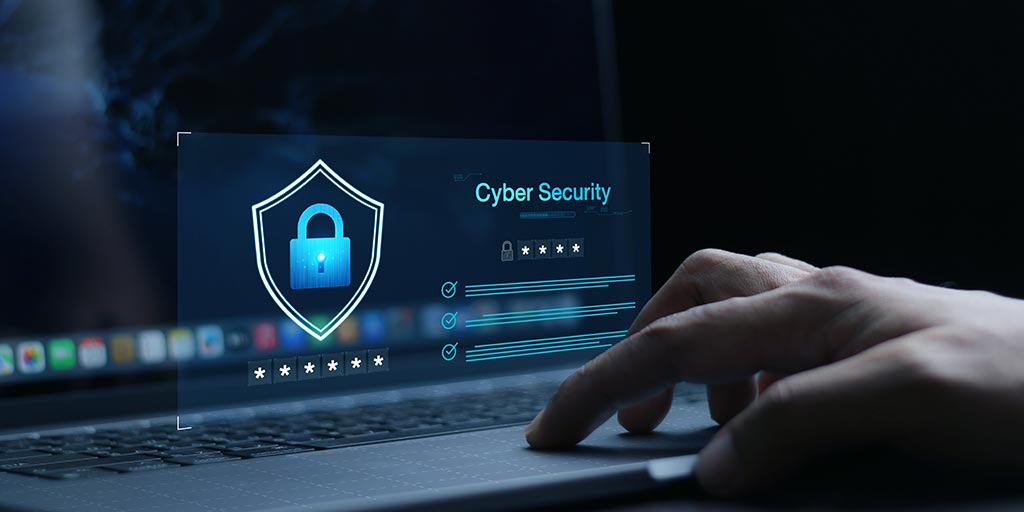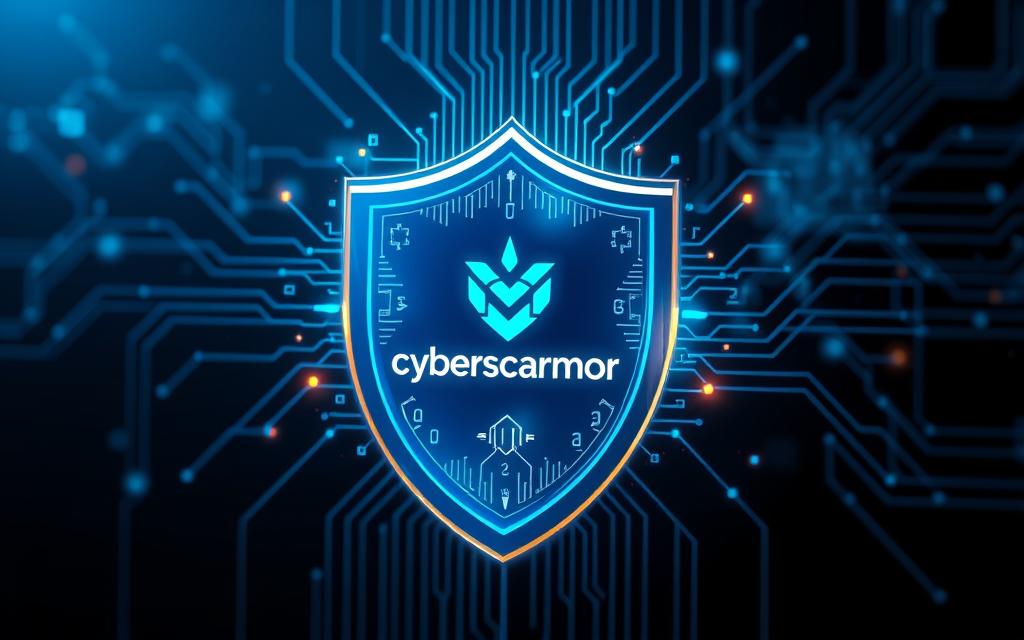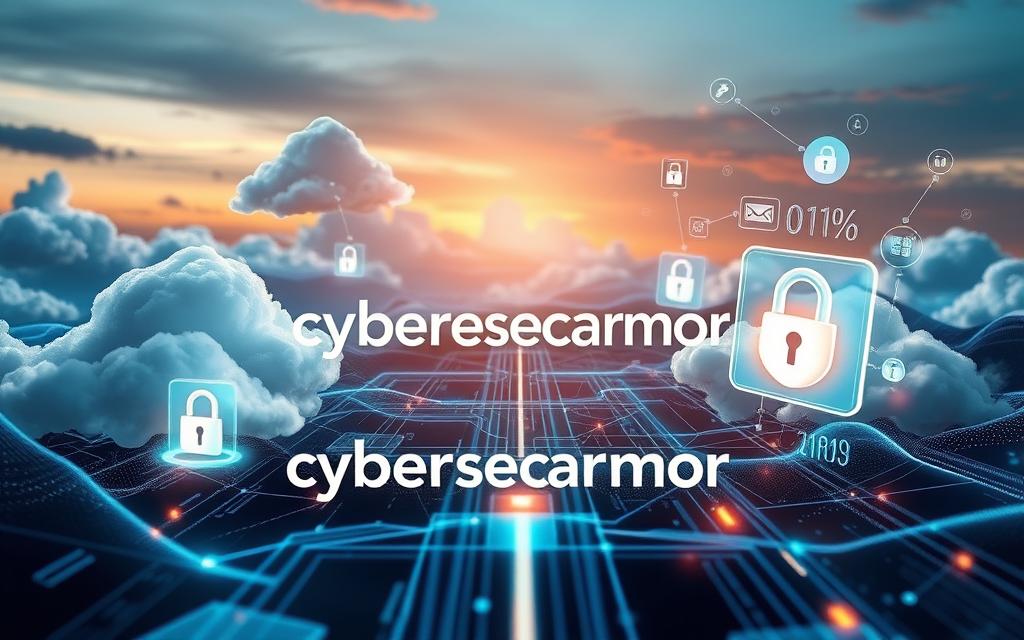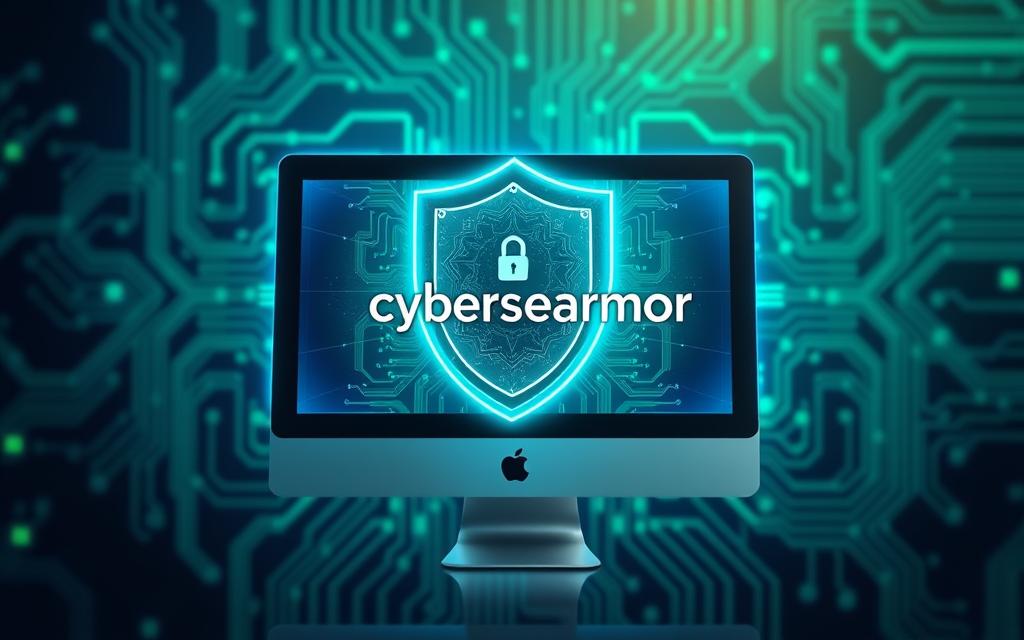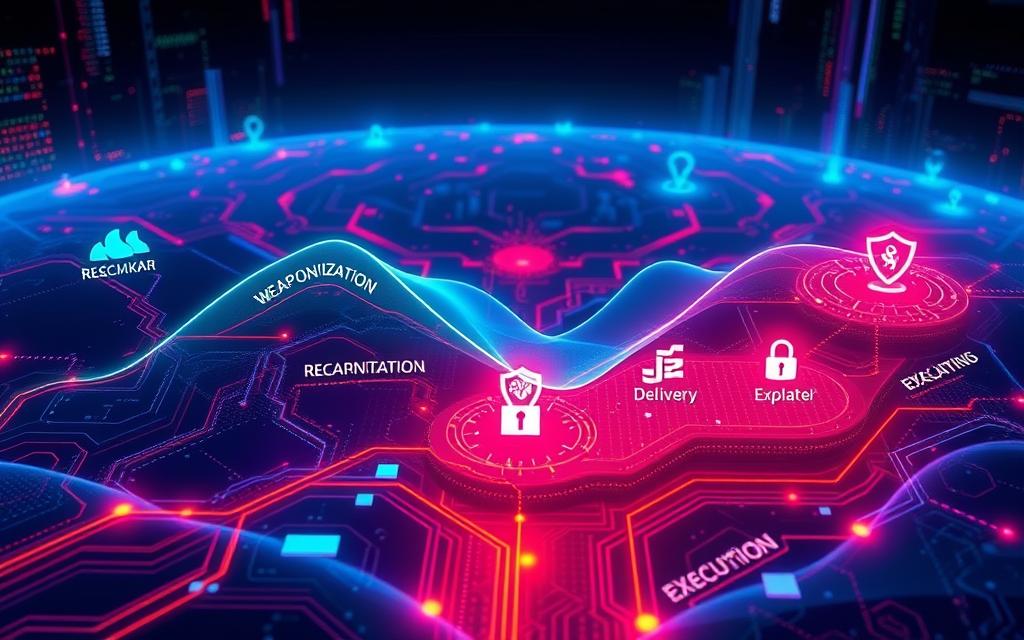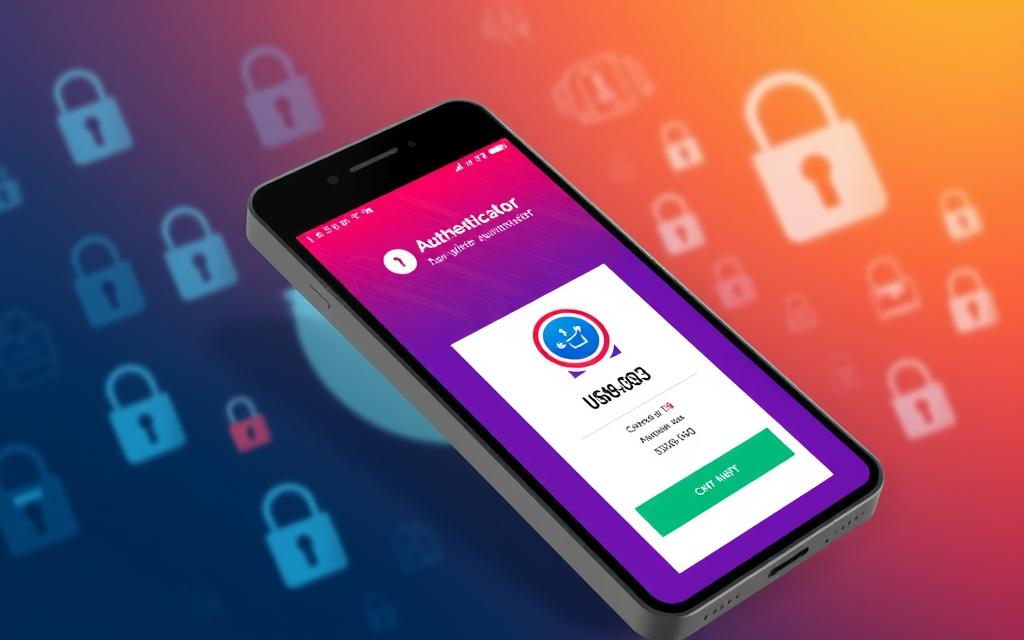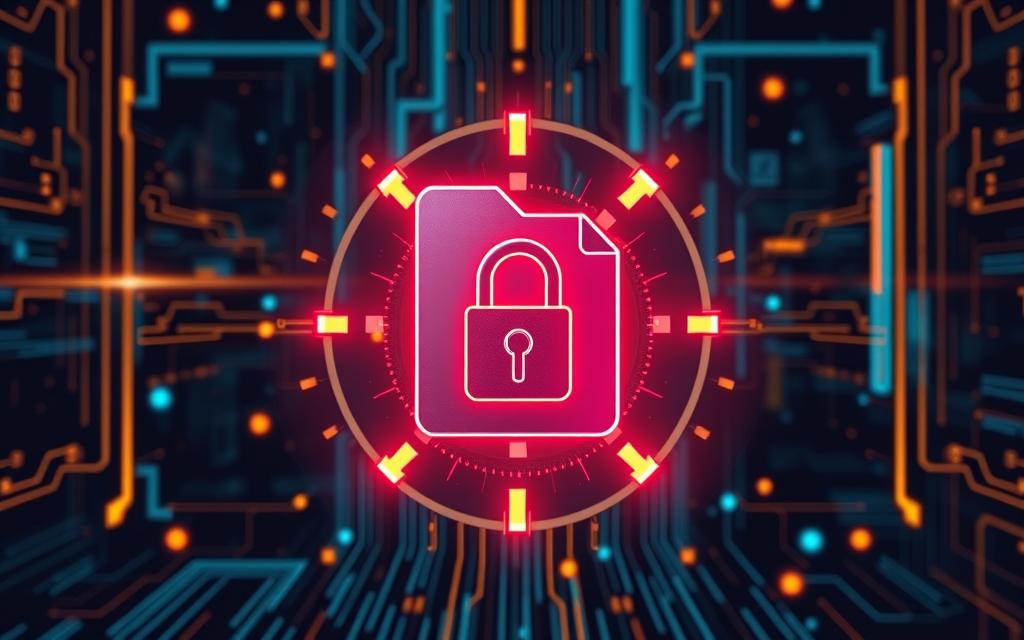Want to protect your Wi-Fi from cyber threats? Learn how to secure your network with our expert guide. Discover tips and tricks to keep your data safe.
The Global AI and Cybersecurity Landscape, Developments and Risks
The Global AI and Cybersecurity Landscape – A deep dive into the latest AI and cybersecurity developments, from DeepSeek’s security flaws to AI-driven cyber threats and espionage. Stay informed on the evolving digital landscape. DeepSeek’s Rise Sparks Concerns Over AI Security The rapid ascent of DeepSeek, a Chinese generative AI platform, has fueled concerns regarding the United States’ dominance in AI, especially as American users increasingly adopt Chinese-owned digital services. Amid ongoing debates over TikTok’s security implications, DeepSeek’s privacy policy explicitly states that user data is stored on servers located in China. Adding to these concerns, security experts from Wiz discovered that DeepSeek had inadvertently exposed a critical database online. This breach compromised over one million records, including user prompts, system logs, and API authentication tokens. As the platform promotes its cost-effective R1 reasoning model, cybersecurity analysts tested 50 well-known jailbreak techniques against DeepSeek’s chatbot and found its safety measures lacking compared to Western alternatives. Neo-Nazi Leader on Trial for Alleged Terror Plot Brandon Russell, cofounder of the Atomwaffen Division, a neo-Nazi guerrilla group, is currently on trial for allegedly conspiring to sabotage Baltimore’s power grid to incite a race war. The case provides a glimpse into federal law enforcement’s efforts to dismantle extremist propaganda networks that seek to inspire mass violence across the U.S. and beyond. West African Scammers Exploit AI for Extortion An informal network of West African fraudsters known as the Yahoo Boys is leveraging AI-generated news anchors to extort victims. By producing fake news reports falsely accusing individuals of crimes, these scammers pressure their targets into paying ransoms under the threat of public humiliation. A review of Telegram posts by WIRED reveals that these AI-generated news segments are highly convincing, making them a powerful tool for manipulation. Hackers Leverage Google’s Gemini for Cyber Attacks According to a Wall Street Journal report, cybercriminal groups affiliated with China, Iran, Russia, and North Korea are using AI chatbots like Google Gemini to enhance their hacking capabilities. These tools assist in tasks such as generating malicious code and researching potential attack targets. While Western security officials have long cautioned about AI’s potential for exploitation, Google’s report highlights that most hacker groups—spread across more than 20 countries—are primarily using AI for research and productivity rather than developing advanced hacking techniques. For example, Iranian hackers have used Gemini to create phishing content in multiple languages, while Chinese-linked groups utilized it for technical reconnaissance on data exfiltration and privilege escalation. Meanwhile, North Korean hackers allegedly employed the chatbot to draft cover letters for remote technology job applications, a tactic aimed at infiltrating tech companies and funding the regime’s nuclear ambitions. This is not the first instance of AI-powered cyber threats. Last year, OpenAI disclosed that multiple foreign hacking groups had similarly exploited ChatGPT. WhatsApp Uncovers Targets of Paragon Spyware Attack WhatsApp has revealed that nearly 100 journalists and civil society members were targeted by spyware developed by Israeli firm Paragon Solutions. The Meta-owned company notified affected users, confirming with “high confidence” that at least 90 individuals were targeted and potentially compromised. The attack reportedly utilized a “zero-click” exploit, meaning victims were infected without needing to open a malicious link. Once installed, the spyware—known as Graphite—granted operators full access to compromised devices, including encrypted messages sent via apps like WhatsApp and Signal. While the perpetrators remain unidentified, Paragon’s spyware is marketed primarily to government agencies, bearing similarities to NSO Group’s notorious Pegasus spyware. AT&T Data Breach: Hackers Target U.S. Politicians Hackers responsible for the massive AT&T data breach last year reportedly combed through stolen records searching for high-profile figures, including members of the Trump family, Vice President Kamala Harris, and Jeanette Rubio, wife of Senator Marco Rubio. The breach occurred in April 2024 when attackers infiltrated AT&T’s Snowflake data storage system, accessing 50 billion call and text message records. The hackers then enriched this dataset using publicly available tools, linking names to phone numbers to create a searchable database—available for a fee. Two individuals have been identified as suspects: Connor Riley Moucka, a Canadian national arrested in November, and John Binns, an American hacker residing in Turkey. Both have been linked to an underground cybercriminal network known as “The Com.” White House Addresses Mystery Drone Activity in New Jersey During the first press briefing of Donald Trump’s second administration, White House press secretary Karoline Leavitt addressed growing concerns over a surge in unidentified drones flying over New Jersey and other parts of the East Coast. According to Leavitt, President Trump personally reviewed the matter and confirmed that the drones were authorized by the Federal Aviation Administration (FAA) for research purposes. She dismissed fears of a foreign threat, stating, “In time, it got worse due to curiosity. This was not the enemy.” The drone sightings, which began just before Thanksgiving, included reports of aerial formations over military bases and water reservoirs. The FBI received over 5,000 reports, though only around 100 cases warranted further investigation. Despite public demands for transparency, officials provided limited explanations. By mid-December, federal agencies—including the Department of Homeland Security, the FBI, and the Department of Defense—concluded that the objects were a combination of legal drones, aircraft, and celestial bodies. As the global AI and cybersecurity landscape evolves, staying informed is crucial. Be vigilant, and stay ahead of emerging digital threats. situs slot slot resmi slot resmi slot thailand situs slot situs slot slot gacor situs togel bandar togel situs slot
Cybersecurity for Small Business: Protecting Your Future
Cybersecurity for Small Business: Learn how to secure your small business from cyber threats with affordable tools and expert tips. Build a safer future for your business today! Running a small business is no small feat. From managing operations to keeping your customers happy, your plate is already full. Now imagine losing valuable customer data or being locked out of your systems due to a cyberattack. Sounds terrifying, right? Cybersecurity for small business is often overlooked because of limited resources or the misconception that hackers only target large corporations. The truth? Small businesses are prime targets because of their perceived vulnerability. Don’t worry—this article has you covered. We’ll walk you through everything you need to know to protect your business effectively without breaking the bank. Ready to take charge of your business’s security? Let’s dive into the essentials of cybersecurity for small businesses! Cybersecurity for Small Business What exactly does “cybersecurity for small business” mean? It’s the process of protecting your business’s digital assets—like sensitive customer information, financial data, and operational systems—from unauthorized access and cyber threats. From phishing attacks to ransomware, the risks are many, but the solutions are simple if approached strategically. Implementing cybersecurity measures isn’t just about technology; it’s also about adopting practices and policies that make your business a tough target for cybercriminals. Why Focus on Small Businesses? The assumption that hackers prioritize large enterprises is a myth. In reality, small businesses are more likely to lack the robust defenses of their larger counterparts, presenting a tempting opportunity for malicious actors. From phishing emails targeting employees to ransomware attacks holding systems hostage, small businesses face a wide array of challenges. The Cost of Neglecting Cybersecurity Neglecting cybersecurity can lead to significant losses. Studies show that over 60% of small businesses close within six months of a cyberattack due to financial and reputational damage. Addressing these risks proactively is essential to securing your business’s long-term viability. Why Cybersecurity Matters for Small Businesses Cybersecurity is more than just a safety net—it’s a necessity for any business that wants to survive and thrive in the digital age. Let’s explore why it’s particularly important for small businesses: 1. Small Businesses Are Prime Targets Contrary to popular belief, hackers don’t just go after large corporations. Small businesses often have weaker security measures, making them easier targets. These businesses are often part of larger supply chains, so a breach in a small business can serve as a gateway to attack larger entities. An attack on one small business can have a ripple effect, affecting partners, suppliers, and even customers. Hackers exploit these vulnerabilities for maximum impact. 2. Legal and Financial Repercussions Small businesses are subject to data protection regulations, including GDPR, HIPAA, and CCPA. Failure to comply can result in hefty fines and legal complications. Cybersecurity ensures that you’re meeting compliance standards while protecting sensitive customer information. A small retail business that suffers a data breach may face lawsuits from customers whose data was exposed, in addition to penalties for non-compliance with privacy laws. 3. Customer Trust and Brand Reputation In the digital age, trust is everything. A single cybersecurity incident can shatter the trust your customers have in your business. With social media amplifying every negative experience, rebuilding your reputation can take years. Proactive cybersecurity measures not only protect your business but also enhance customer confidence. Common Threats Faced by Small Businesses Small businesses face an array of cybersecurity threats. Understanding these threats is the first step toward protecting your business. 1. Phishing Scams Phishing attacks are deceptive emails or messages designed to trick recipients into revealing sensitive information or clicking on malicious links. How It Works: Cybercriminals pose as legitimate entities, such as banks or vendors, to steal credentials or financial data. Impact: A single employee falling victim can compromise the entire business network. 2. Ransomware Attacks Ransomware is malware that encrypts your data, holding it hostage until a ransom is paid. How It Works: Hackers gain access to your system through weak links, such as unpatched software or phishing emails. Impact: Ransomware can halt your operations, with some businesses unable to recover due to financial losses or permanent data loss. 3. Insider Threats Not all threats come from external sources. Insider threats occur when employees, contractors, or partners misuse their access to harm your business. Intentional vs. Unintentional: Some insiders act maliciously, while others unknowingly compromise security by ignoring protocols or falling for scams. 4. Weak Passwords and Credential Theft Easily guessable passwords are a gateway for hackers. Once they gain access to your systems, they can infiltrate sensitive areas undetected. Example: Using “password123” might be convenient, but it’s an open invitation for attackers. Essential Cybersecurity Practices for Small Businesses Taking proactive steps can protect your business from most cyber threats. Here’s how you can build a strong cybersecurity foundation: 1. Educate and Train Employees Employees are your first line of defense against cyber threats. Regular training ensures they are aware of potential risks and know how to respond. Key Topics to Cover: Phishing recognition, safe browsing habits, and password hygiene. Ongoing Training: Make cybersecurity a regular part of your business operations. Monthly or quarterly refreshers can reinforce good habits. How Training Helps Well-informed employees are less likely to fall for phishing attempts or accidentally expose the network to malware. By creating a culture of cybersecurity awareness, you reduce the risk of human error. 2. Use Strong Passwords and Multi-Factor Authentication (MFA) Password-related breaches are among the most common cybersecurity incidents. Strengthen your defenses by implementing strong passwords and MFA. Password Best Practices: Use complex combinations of letters, numbers, and symbols. Change passwords regularly and avoid reusing them. MFA: Adds an extra layer of protection by requiring a second verification step, such as a code sent to your phone. Real-World Benefits Even if a hacker manages to guess a password, MFA ensures they cannot access the account without the secondary verification method. 3. Implement Firewalls and Antivirus Software Firewalls and antivirus programs are essential for defending against cyber
Best Internet Safety for Families, Keep Loved Ones Safe
Learn the best internet safety for families to ensure secure browsing. Discover expert advice, from parental controls to safe social media practices. In today’s digital world, families navigate a vast online landscape every day. From social media to homework help, the internet has transformed our daily lives, making it more critical than ever to ensure a safe online experience for all family members. If you’re looking for the best internet safety for families, this article covers everything you need to know to keep your loved ones secure in the digital space. Why Internet Safety Matters for Families Families today face a growing list of online threats, from hackers to inappropriate content. For parents, keeping children safe online can feel overwhelming with so many apps, devices, and websites to monitor. But with practical tools and knowledge, protecting your family’s internet safety can be simple, effective, and even empowering. Best Internet Safety for Families The best internet safety for families doesn’t require complex systems; instead, it starts with understanding and implementing simple, effective practices. By following these steps, families can ensure a secure and enjoyable online experience for everyone. 1. Set Up Parental Controls Parental controls are one of the best internet safety for families methods to monitor and manage your children’s online activity. These controls help limit access to age-inappropriate content and allow you to track your child’s internet usage. How to Set Up Parental Controls Most devices and platforms, including smartphones, tablets, and gaming consoles, offer built-in parental controls. Here’s how you can set them up: On mobile devices: Use built-in controls in the settings, such as Apple’s Screen Time or Google’s Family Link. On Wi-Fi routers: Some routers offer parental control settings that block certain websites or limit internet usage during specific hours. Social media: Platforms like YouTube, TikTok, and Instagram offer restricted modes or parental controls that you can customize. 2. Create Strong Passwords and Use Two-Factor Authentication (2FA) Setting up strong passwords and two-factor authentication (2FA) is another crucial aspect of best internet safety for families. Passwords are the first line of defense against cyber threats, and 2FA adds an extra layer of protection. How to Build Strong Passwords Creating secure passwords can deter hackers from accessing personal accounts: Use a mix of characters: Include letters, numbers, and symbols. Avoid obvious information: Don’t use birthdays, pet names, or other easy-to-guess information. Make it long: Aim for passwords that are at least 12 characters long. Use 2FA where possible: Enable 2FA on essential accounts to add a second layer of security. 3. Teach Safe Social Media Habits Social media is a significant part of family life today, but it comes with its own set of risks. Teaching children and teens safe social media practices is essential for best internet safety for families. Building Safe Habits When it comes to social media, here’s how to keep things safe: Limit sharing of personal information: Teach children never to share phone numbers, addresses, or real-time location. Use privacy settings: Most platforms have privacy settings to control who can see posts and personal information. Encourage caution with “friends”: Remind your children that not everyone online is who they claim to be. 4. Educate About Phishing and Scams Phishing scams are among the most common online threats, especially targeting families. Understanding phishing and educating your family is essential for best internet safety for families. Spotting Phishing Attempts Here’s what to look for to avoid phishing: Watch for unusual links or attachments: Don’t click on links in unsolicited emails. Look out for urgent messages: Phishing emails often create a sense of urgency. Verify the sender: If you’re unsure about an email or text message, contact the sender directly to confirm. 5. Use Secure Networks Using a secure network is crucial when accessing the internet, especially in public places. Unsecured networks are easy targets for hackers, making network safety a core part of the best internet safety for families. Tips for Safe Network Usage Here are some simple ways to ensure your family is using safe networks: Use home Wi-Fi with a strong password: Secure your home Wi-Fi to prevent unauthorized access. Avoid public Wi-Fi: If you must use public Wi-Fi, avoid accessing sensitive accounts or consider using a VPN. Regularly change Wi-Fi passwords: Update your Wi-Fi password every few months for enhanced security. 6. Set Screen Time Limits and Encourage Balance It’s easy for kids and even adults to lose track of time online. Setting screen time limits helps promote a healthy online and offline balance, a key part of best internet safety for families. Tips for Managing Screen Time Here’s how to set effective screen time limits: Create a schedule: Designate “no-screen” times, such as during meals and family time. Use apps and settings: Many devices have built-in screen time settings to monitor and limit use. Encourage offline activities: Balance screen time with outdoor play, reading, and hobbies. 7. Discuss Cyberbullying and Digital Etiquette Talking about cyberbullying and online etiquette is essential for children to navigate the internet responsibly, an essential step in best internet safety for families. Teaching Digital Etiquette Here’s how to approach the subject of cyberbullying and online manners: Discuss respect and kindness: Teach children to treat others online as they would in real life. Teach them to report bullying: Most platforms offer tools to report abusive behavior. Encourage open communication: Let your children know they can come to you if they experience or witness bullying. 8. Keep Software Updated Outdated software can lead to security vulnerabilities. Keeping devices and apps updated is a simple yet effective way to ensure the best internet safety for families. Updating Practices Here’s what to keep in mind: Enable automatic updates: Set devices to update automatically. Check apps regularly: Some apps may require manual updates. Update antivirus software: Install and update antivirus software to protect against malware. 9. Create a Family Internet Safety Agreement Setting clear expectations for internet use can go a long way toward ensuring best internet safety for families. A
Top Cybersecurity Trends You Can’t Ignore in 2024
Discover key 2024 cybersecurity trends to protect your data. Learn what’s new and how to stay secure. Click to stay ahead! The digital landscape is rapidly evolving, and so are the threats that lurk within it. With businesses increasingly moving their operations online, the need for robust cybersecurity measures has never been more critical. Cybersecurity trends are constantly shifting, driven by new technologies, emerging threats, and evolving user behavior. So, what can we expect in 2024? This article explores the most significant cybersecurity trends to watch, why they matter, and how you can protect your business. Let’s dive in! Why Cybersecurity Trends Matter in 2024 Cybersecurity isn’t just about protecting data; it’s about safeguarding trust, maintaining customer confidence, and ensuring business continuity. The cost of cyberattacks is rising, and businesses of all sizes are potential targets. Hackers are getting more sophisticated, leveraging new tools, and exploiting vulnerabilities in ways we never thought possible. Understanding cybersecurity trends is crucial for businesses to stay one step ahead and protect their assets. In 2024, cybersecurity isn’t just a “tech problem”; it’s a critical business concern. With the rise of ransomware attacks, data breaches, and privacy regulations, companies can no longer afford to be reactive. They need proactive strategies to address these challenges, making it essential to stay informed about the latest cybersecurity trends. Top Cybersecurity Trends 1. Increased Focus on AI and Machine Learning for Threat Detection Artificial Intelligence (AI) and Machine Learning (ML) are no longer just buzzwords; they are game-changers in cybersecurity. AI and ML help detect and respond to threats faster than ever, analyzing vast amounts of data to identify anomalies and predict potential attacks. In 2024, we expect to see more advanced AI-based solutions designed to combat sophisticated cyber threats. Why AI Matters: Traditional security methods rely on human intervention, which can be slow. AI can process large datasets quickly, identify threats in real-time, and reduce the risk of human error. Real-World Application: AI-powered tools can monitor network traffic and automatically block malicious activities, making it easier for businesses to protect themselves. 2. Rise of Ransomware as a Service (RaaS) Ransomware as a Service (RaaS) is a growing concern. This model allows anyone, even those without technical skills, to launch ransomware attacks by purchasing ready-made kits from the dark web. This trend has made ransomware attacks more common, and the financial impact on businesses can be devastating. The RaaS Business Model: RaaS operates like a legitimate business, with customer support, subscription plans, and even profit-sharing models. This accessibility has led to a surge in attacks worldwide. Prevention Strategies: Businesses must invest in robust backup solutions, regular software updates, and employee training to mitigate the risks associated with RaaS. 3. Strengthening Cloud Security As more companies migrate to cloud-based solutions, cloud security has become a top priority. The cloud offers flexibility and scalability, but it also introduces new vulnerabilities. Ensuring data security in the cloud requires a combination of encryption, access control, and regular security assessments. Why Cloud Security is Critical: A breach in a cloud environment can expose sensitive data and lead to significant financial losses. Cloud providers and customers must share responsibility for securing the environment. Best Practices: Implement multi-factor authentication, encrypt data at rest and in transit, and regularly audit cloud configurations to ensure they meet security standards. 4. Zero Trust Architecture Becomes the Standard Zero Trust Architecture (ZTA) is based on the principle of “never trust, always verify.” It assumes that threats can exist both outside and inside a network, so no one is automatically trusted. This approach minimizes the risk of data breaches and unauthorized access. Why Zero Trust is Trending: Traditional perimeter-based security models are no longer sufficient. With remote work and cloud services, the network perimeter has essentially dissolved, making Zero Trust a more effective strategy. Implementing Zero Trust: Organizations should use multi-factor authentication, limit access permissions, and continuously monitor all network activity. 5. Emphasis on Data Privacy and Compliance Data privacy has been a hot topic for years, but 2024 is set to take it up a notch. With new regulations like GDPR, CCPA, and other regional laws, businesses must ensure compliance to avoid hefty fines. Consumers are more aware of their rights, and companies need to be transparent about how they collect, store, and use data. Impact of Data Privacy Laws: Non-compliance can result in significant financial and reputational damage. Businesses need to invest in data protection strategies and privacy management tools. Key Considerations: Companies must regularly review their data handling practices, ensure data encryption, and provide clear privacy policies. 6. Enhanced IoT Security Measures The Internet of Things (IoT) continues to expand, connecting devices across homes, offices, and industries. However, this connectivity also introduces new security challenges. Each connected device is a potential entry point for hackers, making IoT security a critical issue. Why IoT Security is Important: Many IoT devices lack built-in security, making them vulnerable to attacks. A single compromised device can provide access to an entire network. Securing IoT Devices: Businesses should implement network segmentation, regular firmware updates, and strong authentication mechanisms to protect IoT devices. 7. Cybersecurity Skills Gap and Demand for Experts The demand for cybersecurity professionals is growing, but there is a significant skills gap. Companies are struggling to find qualified experts to manage and secure their digital assets. In 2024, we expect to see a push for more training programs and certifications to bridge this gap. Why the Skills Gap Matters: A shortage of skilled professionals can leave businesses vulnerable to attacks. Investing in training and upskilling is crucial for building a resilient cybersecurity infrastructure. Solutions to Consider: Encourage continuous education, provide certifications, and consider outsourcing cybersecurity tasks to managed service providers. How to Prepare Your Business for These Trends Preparing for the latest cybersecurity trends requires a proactive approach. Here are some steps businesses can take: Invest in Advanced Security Tools: Utilize AI and machine learning-based security tools for threat detection and response. Regularly Update Software and Systems: Ensure all software
What is Cyber Security? The Ultimate Guide for Digital Safety
cybersecarmor.com – What is cyber security? Learn how it protects your data, networks, and devices from cyber threats, and discover best practices for staying safe online. In today’s fast-paced, digital world, staying secure online is more important than ever. From browsing social media to managing finances or work projects, everything happens on the internet—and that opens the door to potential cyber threats. As more of our personal and professional lives move online, understanding what is cyber security becomes essential. The truth is, hackers are getting smarter, and cyberattacks are becoming more frequent and sophisticated. Whether it’s protecting sensitive personal information or ensuring the safety of large organizations, cyber security plays a vital role in keeping our digital lives safe and secure. What is Cyber Security? At its core, cyber security refers to the practices, technologies, and processes that protect systems, networks, and data from attacks or unauthorized access. Think of it as your digital bodyguard—always on alert, defending your online presence. Cyber security ensures that personal information stays private and helps prevent malicious attacks from interfering with day-to-day operations for businesses and individuals. Why Cyber Security Matters The importance of cyber security extends beyond just protecting devices. A single breach can have devastating effects. From personal identity theft to multimillion-dollar damages for companies, cyberattacks leave deep impacts. This is why organizations invest heavily in cyber security measures. But even as individuals, we must understand and adopt online safety practices. Types of Cyber Security 1. Network Security Network security involves protecting the internal networks of businesses or personal setups from unauthorized access. It ensures that hackers can’t sneak into your Wi-Fi or office systems. Firewalls, Virtual Private Networks (VPNs), and Intrusion Detection Systems (IDS) are common tools used to safeguard networks. 2. Information Security (InfoSec) InfoSec is all about keeping sensitive data safe from prying eyes. This type of security ensures the confidentiality, integrity, and availability of information, whether it’s stored in databases or traveling through emails. 3. Application Security Ever wondered if your favorite app is safe? Application security involves securing apps from hackers by identifying vulnerabilities during development and patching them. This is crucial to prevent attacks like code injection or malware spreading through apps. 4. Cloud Security With data shifting to cloud platforms like Google Drive or Dropbox, cloud security focuses on protecting information stored in the cloud. Encryption and multi-factor authentication (MFA) are key components here. 5. Endpoint Security This type of security protects devices that access a network, such as smartphones, laptops, and tablets. Endpoint security ensures that even remote devices are secure, preventing them from becoming entry points for attackers. 6. Identity and Access Management (IAM) IAM systems ensure that only authorized individuals have access to certain resources. These systems manage user permissions and credentials to reduce the chances of data leaks. Common Cyber Threats 1. Malware (Viruses, Ransomware, Spyware) Malware is malicious software designed to damage or steal data. Ransomware locks your system until you pay a ransom, while spyware secretly collects your data. 2. Phishing Attacks Phishing attacks involve scammers trying to trick people into sharing personal information, such as passwords or credit card numbers, often via fake emails or messages. 3. Distributed Denial of Service (DDoS) Attacks A DDoS attack overwhelms a system with traffic, causing websites to crash. These attacks aim to disrupt services, often targeting major websites or services. 4. Man-in-the-Middle (MITM) Attacks In an MITM attack, a hacker intercepts communication between two parties to steal information, such as login credentials or financial data. 5. Zero-Day Exploits A zero-day exploit takes advantage of a software vulnerability before developers can patch it, leaving systems vulnerable. How Cyber Security Works Firewalls and Intrusion Detection Systems (IDS) Firewalls act like security gates, blocking unauthorized traffic. Intrusion Detection Systems monitor network traffic for suspicious activity. Encryption Encryption scrambles data so only authorized users can access it. It ensures your data remains safe even if intercepted during transmission. Multi-Factor Authentication (MFA) MFA adds an extra layer of security by requiring users to verify their identity through multiple methods, such as a password and a phone code. Security Information and Event Management (SIEM) SIEM systems monitor systems in real-time and alert security teams of potential threats. Importance of Cyber Security In our interconnected world, cyber security is essential for individuals, businesses, and governments. Every time you use the internet—whether for banking, shopping, or communication—your data is at risk. With the rise of sophisticated attacks, cyber security is more critical than ever. Here’s a deeper look into why it matters. 1. Protecting Personal Data Your personal information—such as passwords, credit card details, and social media accounts—has become a prime target for cybercriminals. Identity theft and financial fraud are common outcomes of personal data breaches. Identity theft: Hackers can steal your personal details and use them to open bank accounts or apply for loans in your name. Financial fraud: Attackers can access your credit cards or online wallets, leading to unauthorized transactions. Data leaks: Information shared online, such as photos or medical records, could be exposed if not properly protected. With strong cyber security practices, individuals can prevent these risks and ensure their sensitive information remains private. Encryption, two-factor authentication, and antivirus software help shield personal data from hackers. 2. Business Continuity For businesses, cyber security ensures smooth operations even in the face of attacks. Imagine a situation where an e-commerce platform gets hacked—customers wouldn’t be able to place orders, leading to lost revenue and reputational damage. Ransomware attacks can cripple businesses by locking their systems until a ransom is paid. DDoS attacks can bring down websites, making them inaccessible to users for hours or days. Without effective security measures, businesses risk downtime, lost customers, and financial losses. Proactive cyber security strategies—like data backups, disaster recovery plans, and continuous monitoring—help companies maintain business continuity and quickly bounce back from attacks. 3. Compliance with Regulations Governments worldwide enforce laws to ensure that businesses protect their users’ data. Failing to comply with these regulations can result in hefty fines
How to Secure Your Information in Cyber Security: Top Tips
cybersecarmor.com – How to secure your information in cyber security? Learn the best practices for securing your information in cyber security. Stay safe online with these essential tips and safeguard your data from threats. In today’s digital age, the question of how to secure your information in cyber security has never been more crucial. With increasing threats from hackers, malware, and data breaches, safeguarding personal and sensitive information is a top priority for individuals and businesses alike. This guide provides you with the knowledge you need to protect your data effectively, from strong passwords to advanced encryption techniques. Whether you’re a casual user or tech-savvy, these steps will help you maintain control over your digital footprint and keep your data safe from malicious actors. What is Cyber Security and Why is it Important? Cyber security refers to the practice of protecting systems, networks, and data from digital attacks. These cyber-attacks are aimed at accessing, altering, or destroying sensitive information, extorting money from users, or interrupting normal business processes. With the rapid increase in internet usage and digital transactions, the importance of understanding how to secure your information in cyber security is greater than ever before. Key Components of Cyber Security Cyber security covers several key aspects: Network Security: Protecting the integrity of a network and preventing unauthorized access. Application Security: Ensuring software and devices are secure from threats. Information Security: Protecting data from unauthorized access and tampering. Disaster Recovery Planning: Having protocols in place for data recovery in the event of a breach. End-user Education: Teaching people the importance of cyber security and how to follow best practices. Without robust cyber security practices, personal data, financial information, and even national security could be at risk. Why Is Your Information at Risk Online? The internet, while incredibly convenient, is also a playground for cybercriminals. Every online transaction, social media post, or email opens a potential door for hackers. Cyber threats include phishing, ransomware, spyware, and malicious software. These attacks can compromise your personal data, leading to identity theft or financial loss. That’s why understanding how to secure your information in cyber security is essential. Common Cyber Threats Here are some of the most common cyber threats: Phishing Attacks: Scammers send fraudulent messages that appear to be from reputable sources. Ransomware: This type of malware encrypts files, and hackers demand payment to unlock them. Spyware: Malicious software that spies on your computer activities without your knowledge. Denial of Service (DoS) Attacks: Hackers overwhelm a system, making it unavailable to users. Man-in-the-Middle Attacks: Intercepting communication between two systems to steal data. Each of these attacks can lead to severe consequences if your cyber defenses are not up to par. Protecting your information online is a necessity. How to Secure Your Information in Cyber Security Now that you understand the threats, let’s dive into how to secure your information in cyber security. Following a few essential practices can significantly reduce the risk of cyberattacks and data breaches. Create Strong, Unique Passwords Passwords are your first line of defense in securing your information online. A weak password is like leaving your front door unlocked for hackers. The stronger your password, the harder it will be for cybercriminals to gain access to your accounts. Best Practices for Strong Passwords Use a combination of letters, numbers, and symbols. Avoid using common words or easily guessed information (like birthdates). Make it long – at least 12 characters. Use a password manager to store and generate unique passwords. Regularly update your passwords. By following these guidelines, you’ll make it much harder for attackers to crack your password. Enable Two-Factor Authentication (2FA) Two-factor authentication (2FA) adds an extra layer of security to your online accounts. Even if someone manages to steal your password, they’ll need a second piece of information (like a code sent to your phone) to access your account. Benefits of 2FA Increased protection against unauthorized access. Prevents hackers from gaining control even if they have your password. Supports most major platforms (Google, Facebook, banking apps). Enabling 2FA wherever possible is one of the most effective steps you can take to secure your information. Use Encryption to Protect Sensitive Data Encryption is a powerful tool in how to secure your information in cyber security. Encryption scrambles your data into unreadable code that can only be deciphered with the correct key. Types of Encryption End-to-End Encryption: Ensures only the sender and recipient can read the data. AES Encryption: A standard used by governments to protect classified data. File Encryption: Encrypts files on your devices to protect them from unauthorized access. By encrypting your sensitive data, you ensure that even if hackers gain access, they won’t be able to use the information. Backup Your Data Regularly No system is foolproof, which is why it’s crucial to back up your data. In the event of a cyber-attack or hardware failure, having backups allows you to restore your information with minimal disruption. Best Backup Practices Use cloud-based storage with encryption. Schedule regular backups (daily or weekly). Keep multiple copies in different locations (cloud and external drives). Test your backups regularly to ensure they work. With regular backups in place, you can avoid losing vital data to ransomware or system failures. Be Wary of Phishing Scams Phishing is one of the most common tactics used by cybercriminals. They trick you into giving up sensitive information by pretending to be legitimate sources, such as banks or social media platforms. How to Spot a Phishing Attempt Look for spelling or grammatical errors in emails. Check the sender’s email address – is it from a trusted source? Never click on suspicious links or download attachments. If something feels off, contact the company directly to verify. Knowing how to spot and avoid phishing attempts can save you from losing sensitive information to hackers. Learning how to secure your information in cyber security is a critical step in protecting your data and privacy online. By following best practices such as creating strong passwords, enabling two-factor authentication, using
Windows Malware Removal Tool: How to Use It Effectively
Discover how to effectively use the Windows Malware Removal Tool to protect your PC. We’ll guide you through the process of eliminating threats and securing your system.
Is CloudConvert Safe? Testing with Malwarebytes
Discover if CloudConvert is safe with our Malwarebytes test. We explore the security of this popular file conversion tool to help you convert with confidence.
Why Does Mac Think Everything Is Malware? Explained
Discover why your Mac flags harmless files as malware. We’ll explain the reasons behind this behavior and how to address it effectively.

